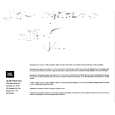|
|
|
Productos
|
|
Información
|
|
Destacado
|
|
|
 |
|
|
No hay comentarios de productos.
SDP-5 Serial Communications Protocol
Printed on: 04/01/03
5 Data Link Layer
The data link layer is used to define a transmission packet. The layer appends a header and tail that encloses the transmitted application packet data. The data link header will contain the start of packet byte and count of bytes to follow. The data link tail will contain the end of packet byte. Data Link Header: Byte Number Description First Byte(0) Start of Packet (SOP) Byte(1) DLL Data Count Application Header: Byte(2) Command APP Data Count (number of application data bytes to Byte(3) Follow) Application Data: Byte(4) Byte(5) � Last Data Byte -1 Data Link Tail: Last Byte Value 0xF1 nn
nn nn
Data[0] Data[1] Data[�] Data[Data Count -1]
nn nn nn nn
End of Packet (EOP)
0xF2
5.1 Errors
If the number of DLL data bytes received is the same as the data count and an EOP has not been received, the SDP-5 responds by transmitting a NAK packet with an error code DC_ERR_INVALID_PACKET. The SDP-5 then continues to look for a SOP byte and will not process the erroneous application packet. The HOST can use this as an indicator to retransmit the corrupted packet. In addition, each byte of a packet must be received sequentially and within the INTER_PACKET_TIME. If any of the bytes within a packet transmission exceeds the INTER_PACKET_TIME, the SDP-5 will respond by transmitting a NAK packet with an error code DC_ERR_INVALID_PACKET. The SDP-5 then continues to look for a SOP byte and will not process the erroneous application packet. The HOST can use this as an indicator to retransmit the corrupted packet.
6 Application Layer 6.1 SDP-5 Asynchronous Notification Packets
SDP-5 has been designed to transmit the asynchronous notification packets following these system changes: 1. Power On 2. Entering Standby 3. Front Panel Display update 4. Parameter Value Changes.
© 2003 JBL, Inc. All rights reserved.
8 of 80
 $4.99 SDP-5 JBL
Manual de Usuario Manual del propietario completo en formato digital. El manual estará disponible para descarga como …
|
|
 |
> |
|
